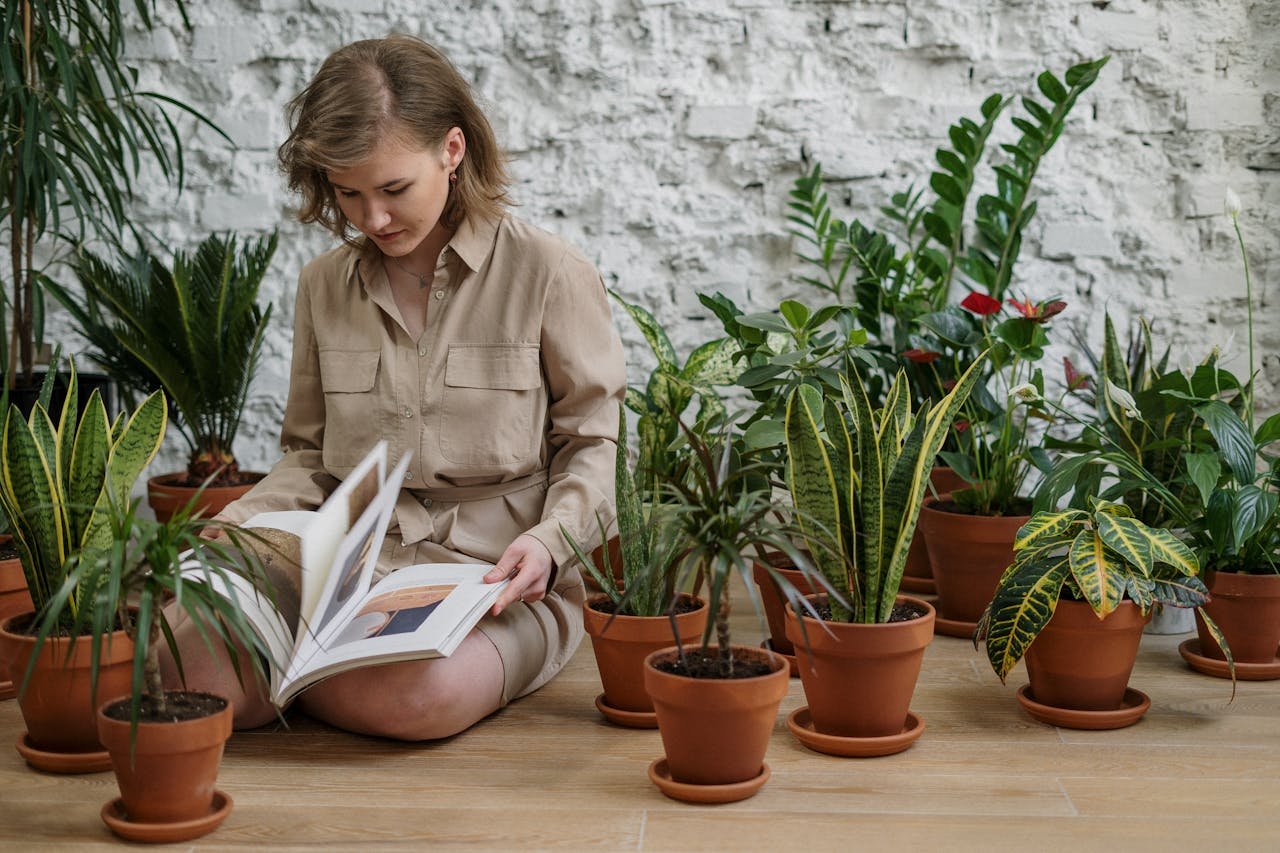False Christmas Cactus Care: Common Mistakes to Avoid
Here’s an overview:
Introduction
Understanding the False Christmas Cactus
Choosing the Right Environment
Watering Needs
Light Requirements
Temperature and Humidity
Soil and Potting
Feeding and Fertilizing
Pruning and Propagation
Common Pests and Diseases
Reblooming Your False Christmas Cactus
Winter Care Tips
Troubleshooting Common Issues
Myths vs. Facts
Conclusion
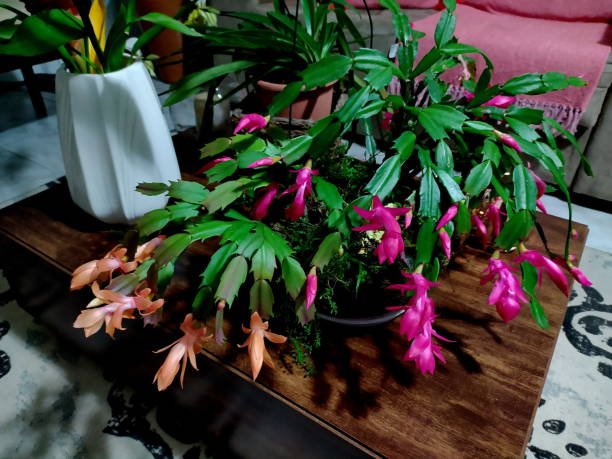
Introduction False Christmas Cactus;
I have always been captivated by the beauty of Christmas cacti, with their vibrant blooms bringing festive cheer to any home during the holiday season. However, caring for these stunning plants can be a bit tricky, and there are several common mistakes that many people make when tending to their false Christmas cacti. In this article, I will share valuable insights into these mistakes and how to avoid them, ensuring that your Christmas cactus thrives and blossoms beautiful flowers year after year. Let’s delve into the world of false Christmas cactus care and learn how to provide the best environment for these lovely plants to flourish.
Understanding the False Christmas Cactus
I’ve noticed that many people confuse the False Christmas Cactus (Schlumbergera truncata) with the true Christmas Cactus (Schlumbergera bridgesii). Here are some key points to help you understand the differences:
- Leaf shape: The False Christmas Cactus has more pointed and claw-like projections on its stem segments, while the true Christmas Cactus has rounder and smoother edges.
- Flower position: In the False Christmas Cactus, the flowers emerge from the tips of the stem segments, while in the true Christmas Cactus, the flowers sprout from the notches of the stem segments.
- Flower color: False Christmas Cacti typically have flowers in shades of red, pink, or white, whereas true Christmas Cacti often have more vibrant and varied color options.
- Blooming time: False Christmas Cacti usually bloom earlier in the fall, while true Christmas Cacti bloom closer to the winter holiday season.
- Cultural differences: False Christmas Cacti prefer slightly different care conditions compared to true Christmas Cacti, so understanding which type you have is crucial for proper maintenance.
Take a closer look at your Christmas Cactus to determine whether it is a False Christmas Cactus or the true Christmas Cactus. Understanding the differences will help you provide the best care for your plant and ensure it thrives and blooms beautifully.
Choosing the Right Environment
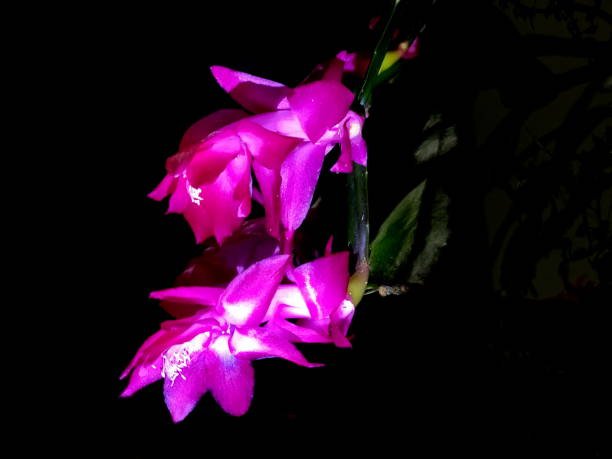
When caring for your Christmas cactus, one of the crucial factors to consider is the environment in which you place the plant. Here are some key points to keep in mind:
- Light: I always make sure to provide my Christmas cactus with bright, indirect sunlight. Placing it near a window where it can get some sunlight during the day works best for me. Direct sunlight can be too harsh and lead to sunburn on the leaves.
- Temperature: Christmas cacti thrive in a moderate temperature range. I try to keep my plant in an area where the temperature stays around 65-75°F (18-24°C) during the day and slightly cooler at night. Fluctuations in temperature can stress the plant, so I avoid placing it near drafts or heating vents.
- Humidity: These plants prefer higher humidity levels than what you might have in your home. To mimic a more humid environment, I occasionally mist the plant’s leaves with water. Placing a tray of water near the plant or using a humidifier can also help maintain the necessary humidity levels.
- Air circulation: Adequate air circulation is essential for preventing issues like mold and mildew on your Christmas cactus. I ensure that there is some airflow in the room where I keep my plant. However, I avoid placing it in a drafty area that might expose it to strong gusts of air.
By choosing the right environment for your Christmas cactus, you can set the stage for healthy growth and beautiful blooms.
Watering Needs
I find it essential to understand the watering needs of a False Christmas Cactus to keep it healthy. Here are some critical points to remember:
- Moderation is key: I make sure not to overwater my False Christmas Cactus as it can lead to root rot. I typically water it when the top inch of the soil is dry.
- Consistent moisture: While I avoid overwatering, I also ensure that the soil remains consistently moist during the growing season. In winter, I reduce the frequency of watering.
- Drainage is crucial: It’s vital to have well-draining soil for a False Christmas Cactus. I make sure the pot has drainage holes to prevent water from pooling at the bottom.
- Avoid water on leaves: When watering, I am careful not to let water sit on the plant’s leaves as it can cause rot or fungal diseases.
- Room temperature water: I use room temperature water when watering my False Christmas Cactus to avoid shocking the plant with cold water.
- Modify watering in dormancy: During the plant’s dormancy period, usually in late fall or winter, I reduce watering to help mimic its natural environment.
- Check humidity: If the air in my home is particularly dry, I mist the plant occasionally to provide extra humidity.
Mastering the watering needs of a False Christmas Cactus is crucial for its overall health and well-being. By following these guidelines, I can ensure that my plant thrives and continues to brighten up my space with its vibrant blooms.
Light Requirements
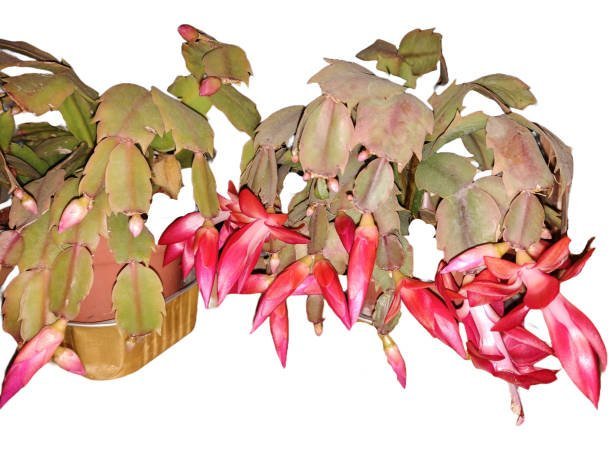
When it comes to caring for false Christmas cacti, understanding their light requirements is crucial. Here are some key points to keep in mind:
- Indirect sunlight: False Christmas cacti prefer bright, indirect light. Direct sunlight can scorch their leaves, so it’s best to place them near a window where they can receive filtered sunlight or indirect light.
- Avoid intense heat: These plants do not tolerate extreme heat well. Keep them away from sources of intense heat such as radiators or heating vents, especially during the winter months when these plants prefer cooler temperatures.
- Rotate regularly: To ensure even growth on all sides of the plant, rotate it regularly. This will prevent the plant from leaning towards the light source and promote balanced growth.
- Supplement with artificial light: If you don’t have access to sufficient natural light, consider supplementing with artificial light. LED grow lights can be a good option to ensure your false Christmas cactus gets the light it needs to thrive.
- Monitor for signs of inadequate light: If your plant is not receiving enough light, it may start to show signs such as pale leaves, slow growth, or a leggy appearance. If you notice these symptoms, consider moving your plant to a brighter location or providing additional lighting.
Providing the right amount of light is essential for the health and growth of your false Christmas cactus. By following these light requirements, you can help your plant thrive and avoid common care mistakes.
Temperature and Humidity
Maintaining the right temperature and humidity levels is crucial for the health of your false Christmas cactus. Here are some key points to consider:
- Temperature: False Christmas cacti thrive in temperatures between 70-80°F (21-27°C) during the daytime and slightly cooler at nights. Avoid exposure to extreme temperatures and drafts, as this can cause stress to the plant.
- Humidity: These cacti prefer higher humidity levels, ideally around 50-60%. If the air in your home is too dry, consider using a humidifier or placing a tray of water near the plant to increase moisture in the air. Misting the plant occasionally can also help.
- Avoid sudden temperature changes: Rapid fluctuations in temperature can shock your false Christmas cactus. Keep the plant away from cold drafts, air conditioning vents, and radiators.
- Monitor moisture levels: Overwatering or allowing the soil to dry out completely can stress the plant. Aim to keep the soil slightly moist but not waterlogged. Use a well-draining potting mix to prevent waterlogging.
- Consider winter care: During the winter months, provide a slightly cooler environment (around 55-65°F or 13-18°C) and reduce watering to allow the plant to rest.
I find that maintaining a consistent environment with moderate temperatures and humidity levels is key to ensuring a healthy and thriving false Christmas cactus. By paying attention to these factors, you can avoid common care mistakes and enjoy a beautiful, vibrant plant.
Soil and Potting
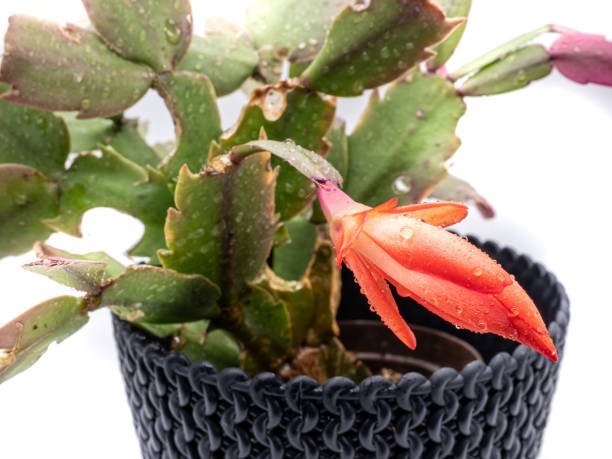
When it comes to caring for your False Christmas Cactus, the right soil and potting techniques are crucial for its health and growth. Here are some essential tips to consider:
- Well-Draining Soil: Use a well-draining potting mix specifically designed for cacti and succulents. Avoid heavy soils that retain too much moisture, as this can lead to root rot.
- Pot Size: Choose a pot that is slightly larger than the current root ball of your False Christmas Cactus. Avoid pots that are too large, as excess soil can hold too much moisture and harm the plant.
- Repotting: Repot your False Christmas Cactus every 2-3 years or when you notice it has outgrown its current pot. Be gentle with the roots during repotting to avoid damaging them.
- Potting Technique: When repotting, ensure the plant is centered in the new pot and add fresh soil around the root ball. Gently firm the soil to provide stability for the plant.
More
It’s essential to provide the right soil and potting conditions to ensure the overall health and well-being of your False Christmas Cactus. By following these tips, you can help your plant thrive and flourish in its environment.
Feeding and Fertilizing
- When it comes to feeding your false Christmas cactus, remember that less is more. Over-fertilizing can do more harm than good, so it’s essential to strike a balance. I recommend fertilizing with a balanced houseplant fertilizer diluted to half strength. This should be done every 4-6 weeks during the growing season, which typically runs from spring to early fall.
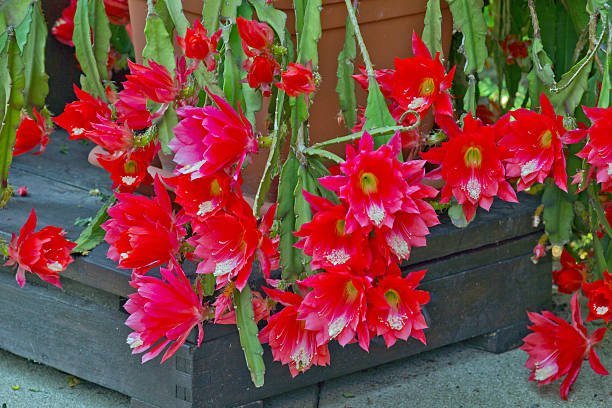
- Key points to remember for feeding and fertilizing:
Feed sparingly to avoid over-fertilizing.
Opt for a balanced houseplant fertilizer diluted to half strength.
Fertilize every 4-6 weeks during the growing season.
Additionally, keep in mind that the false Christmas cactus doesn’t require as much fertilizer as other plants. Providing too much can lead to nutrient build-up in the soil, which may harm your plant more than help it. So, always err on the side of caution when it comes to feeding your false Christmas cactus.
More
Remember to scale back on feeding and fertilizing during the winter months when the plant is not actively growing. This rest period is crucial for the plant’s health and blooming cycle. By following these feeding and fertilizing tips, you can help your false Christmas cactus thrive and bloom beautifully year after year.
Pruning and Propagation
When it comes to false Christmas cactus care, knowing how to prune and propagate your plant correctly is crucial for its health and longevity. Here are some essential tips to help you maintain a thriving false Christmas cactus:
Pruning:
- Remove Dead or Yellowing Stems: Regularly inspect your false Christmas cactus for any dead or yellowing stems. Use clean and sharp scissors to snip these off close to the main stem to encourage new growth.
- Promote Bushier Growth: To encourage a bushier appearance, prune the stems back by cutting just above a leaf segment. This will stimulate new growth from the base of the cutting.
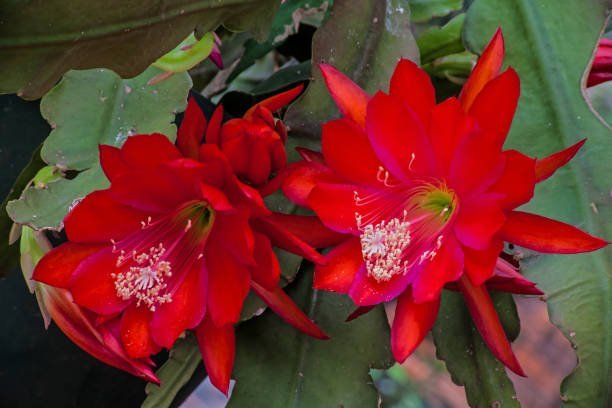
Propagation:
- Water Propagation: One easy way to propagate your false Christmas cactus is through water propagation. Simply place a healthy cutting in a glass of water, ensuring that a few leaf segments are submerged. Change the water every few days to prevent stagnation.
- Soil Propagation: Another method is soil propagation. Allow the cutting to callus for a day or two, then plant it in a well-draining potting mix. Keep the soil slightly moist and place the cutting in a warm, bright location, avoiding direct sunlight.
Propagation and pruning are essential aspects of false Christmas cactus care that can help you expand your plant collection and maintain the health and appearance of your existing plants. By following these tips, you can enjoy a beautiful and thriving false Christmas cactus for years to come.
Common Pests and Diseases
- Spider Mites: In my experience, spider mites can be a nightmare for False Christmas Cacti. These tiny pests suck the plant’s juices, causing leaves to look stippled and discolored. To tackle them, I recommend regularly wiping down the leaves with a damp cloth and using insecticidal soap.
- Mealybugs: These white, cottony pests love to feast on the succulent stems of False Christmas Cacti. If you spot them, I suggest dabbing them with a cotton swab dipped in rubbing alcohol. You may need to repeat this process every few days until they are gone.
- Root Rot: Overwatering is a common mistake that can lead to root rot. When I notice my plant’s roots are mushy and brown, I take immediate action. I gently remove the plant from its pot, trim away any affected roots, and repot it in fresh, well-draining soil.
- Fungal Diseases: Keeping the foliage dry can help prevent fungal diseases like leaf spots or powdery mildew. If you notice any signs of fungal infection, I recommend removing the affected leaves, improving air circulation, and avoiding overhead watering.
- Bud Drop: If your False Christmas Cactus is dropping buds before they bloom, it might be due to sudden temperature changes or inadequate light. I suggest finding a stable location with bright, indirect light and avoiding drafty spots to help prevent bud drop.
- Yellowing Leaves: Yellow leaves can indicate a range of issues, from underwatering to nutrient deficiencies. I always check the soil moisture and adjust my watering schedule accordingly. Additionally, a balanced houseplant fertilizer can help address any nutrient deficiencies.
How To Diagnose Plant Problems
More
Remember, prevention is key when it comes to combating pests and diseases. Regularly inspect your False Christmas Cactus for any signs of trouble and address issues promptly to keep your plant healthy and thriving.
Reblooming Your False Christmas Cactus
I find that encouraging my false Christmas cactus to rebloom can be a rewarding experience. To help your plant blossom again, here are some tips to follow:
- Light Exposure: During the fall and winter, when you want your false Christmas cactus to rebloom, make sure it receives 12-14 hours of darkness at night. This period of darkness is crucial for the plant to set buds.
- Temperature: To stimulate blooming, keep your plant in a cooler environment, around 50-55°F (10-13°C), during the fall. Once buds appear, you can gradually increase the temperature to around 60-70°F (15-21°C).
- Watering: Be mindful of your watering routine. Allow the top inch of the soil to dry out between waterings, particularly in the winter months. Overwatering can lead to root rot and hinder reblooming.
- Fertilization: During the growing season in spring and summer, you can feed your false Christmas cactus with a balanced liquid fertilizer every 4-6 weeks. However, reduce fertilization when you want the plant to bloom.
- Pruning: Prune your false Christmas cactus after flowering to encourage a bushier and more compact growth habit. This can also stimulate the development of new buds for the following blooming season.
- Pest Control: Keep an eye out for common pests like mealybugs and spider mites. If detected, treat them promptly to prevent them from affecting the reblooming process.
By following these steps, I’ve been successful in getting my false Christmas cactus to rebloom year after year. Remember, patience is key when it comes to encouraging your plant to flower again.
Winter Care Tips
In the winter, Christmas cacti need special attention to thrive. Here are some important winter care tips that you should keep in mind:
- Temperature: I ensure that my Christmas cactus is placed in a cool location during the winter months. It’s essential to avoid exposing the plant to extreme cold, as this can harm it.
- Lighting: I make sure that my Christmas cactus gets enough indirect sunlight during the shorter winter days. Placing it near a bright window where it can receive sunlight without being exposed to direct rays is ideal.
More
- Watering: During the winter, I adjust my watering routine for the Christmas cactus. I water it less frequently, allowing the top inch of the soil to dry out between watering sessions. Overwatering can lead to root rot, so it’s crucial to be cautious.
- Humidity: To provide sufficient humidity for my Christmas cactus during the dry winter months, I occasionally mist the plant with water. This helps to prevent the edges of the leaves from drying out and promotes healthy growth.
- Fertilization: I refrain from fertilizing my Christmas cactus during the winter. The plant is in a dormant phase during this time, so it doesn’t require additional nutrients. I resume fertilizing in the spring when the plant starts to actively grow again.
By following these winter care tips, you can help your Christmas cactus stay healthy and vibrant throughout the colder months.
Troubleshooting Common Issues
- Sometimes my Christmas cactus drops its buds before blooming, especially when I move it around a lot. To prevent this, I try to keep the plant in a fairly consistent location.
- If my Christmas cactus leaves start to turn yellow, I check the soil moisture. Overwatering can cause root rot, leading to yellow leaves. I adjust my watering schedule accordingly.
- Brown spots on the leaves might indicate sunburn. I make sure to place my Christmas cactus in a spot with bright, indirect light to avoid this issue.
- If my Christmas cactus is not blooming, I consider the amount of darkness it receives. The plant needs around 12-14 hours of darkness each night to set buds, so I adjust its lighting accordingly.
- Wilted or shriveled stems can be a sign of underwatering. I check the soil moisture and give my Christmas cactus a good drink if needed.
- If I notice pests like mealybugs or spider mites on my Christmas cactus, I gently wipe the leaves with a damp cloth or use insecticidal soap to get rid of them.
- Weak or leggy growth might indicate a lack of nutrients. I feed my Christmas cactus with a balanced fertilizer during the growing season to promote healthy growth.
- If my Christmas cactus is overcrowded and not thriving, I consider repotting it into a slightly larger container with fresh, well-draining soil.
- It’s crucial to address issues promptly to keep your Christmas cactus healthy and thriving. By paying attention to these common problems, I can ensure my plant remains vibrant and beautiful all year round.
Myths vs. Facts
Myth: Christmas cacti need a lot of water.
- Fact: While Christmas cacti do require regular watering, they prefer slightly dry conditions. Overwatering can lead to root rot, so it’s best to let the top inch of soil dry out between waterings.
Myth: Christmas cacti need direct sunlight. - Fact: Christmas cacti thrive in bright, indirect light. Direct sunlight can cause their leaves to burn, so placing them in a spot with filtered light or a few feet away from a sunny window is ideal.
Myth: Christmas cacti need to be repotted frequently. - Fact: Christmas cacti prefer being slightly root-bound and only need to be repotted every 2-3 years. Repotting too often can shock the plant and disrupt its blooming cycle.
Myth: Christmas cacti bloom at Christmas time. - Fact: While they are often associated with the holiday season, Christmas cacti can bloom anytime from late fall to early spring. The bloom time is influenced by factors like temperature, light exposure, and proper care.
Myth: Christmas cacti are high-maintenance plants. - Fact: Christmas cacti are relatively low-maintenance plants that can thrive with proper care. By following simple care guidelines like providing the right light, watering correctly, and ensuring proper humidity, anyone can enjoy a healthy and blooming Christmas cactus.
My Opinion
In my experience, avoiding these common mistakes can make a significant difference in the health and blooming of your Christmas cactus. Remember to check the watering schedule, the lighting conditions, and the temperature to ensure your plant thrives.
Keep in mind that repotting should be done sparingly, and always use a well-draining soil mix to prevent waterlogging.
If you spot any signs of pests or diseases, take action promptly to prevent further damage to your Christmas cactus.
Finally, remember that patience is key when caring for these plants. It may take some time to see results, but with proper care, your Christmas cactus will reward you with stunning blooms year after year.



